On August 14th, I had the opportunity to ride on the Edward M. Cotter, a 125-year-old fireboat that belongs to the City of Buffalo. It is considered to be the oldest working fireboat in the world, and it was designated a National Historical Landmark in 1996. That is interesting to me because I had no idea that something that moved could be a landmark. So, I suppose I learn something new every day. Or, at least I try to learn something new every day. Who knows how much of that new information is lost the moment I spot something shiny? But I digress, which happens frequently.
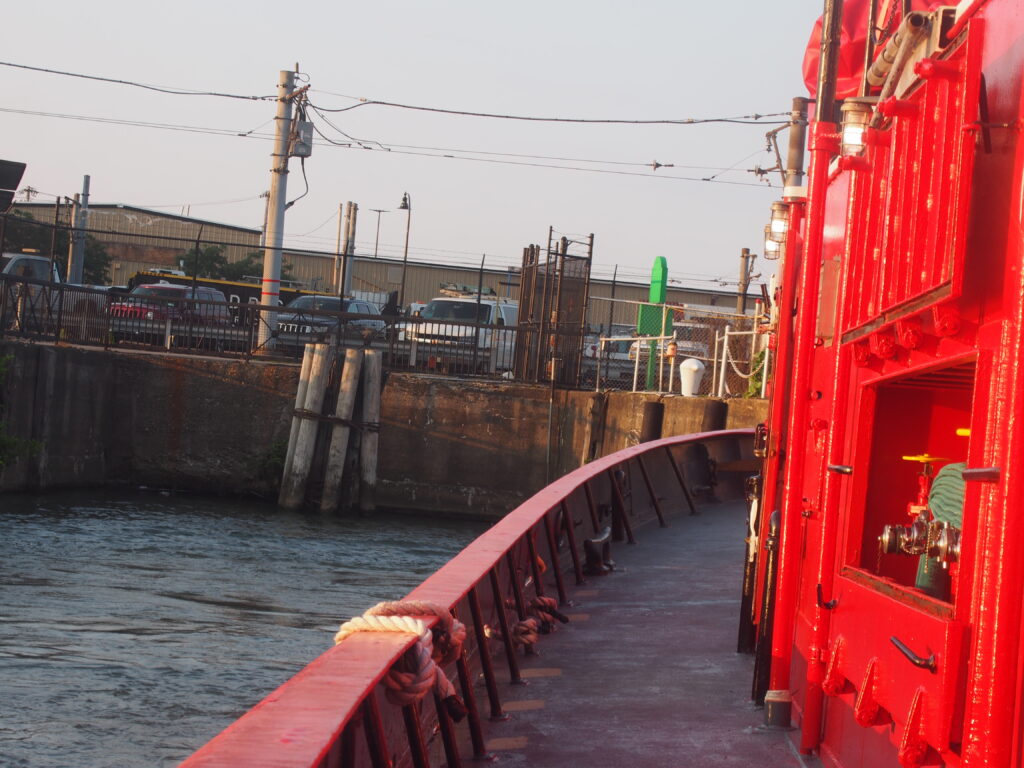
Here is some information about the Edward M. Cotter from Wikipedia: “Along with its firefighting duties, during the winter Edward M. Cotter is used as an icebreaker on Buffalo’s rivers. Edward M. Cotter mounts five fire monitors that are capable of pumping 15,000 US gallons per minute (0.95 m3/s; 12,000 imp gal/min).[6][7] It can often be seen sailing out of its berth and south-west to Lake Erie, returning north through the breakwall and firing its fire monitors.
Here is an interesting factoid about the Edward M. Cotter. The name Edward M. Cotter isn’t its original name. When it was christened in September of 1900, it was called the William S. Grattan, after Buffalo’s first paid fire commissioner.
In 1928, the William S. Grattan was involved in a terrible disaster! While it and another fireboat were fighting a huge fire that had engulfed an oil barge, the fumes resulted in an explosion aboard the William S. Grattan, and the explosion caused fires to be ignited. The results were terrible. The chief engineer, Thomas Lynch, was killed, and several members of the crew were injured. The boat was badly damaged, and it remained boarded up for eighteen months. There was debate about whether to replace it or to rebuild it. The decision was made to rebuild the boat, and that happened in 1930 at the Buffalo Dry Dock Company. It also received upgrades. By 1955, the William S. Grattan needed more updates, and, that year, it was renamed in honor of Edward M. Cotter, a respected firefighter and the leader of the firefighters union, who had recently passed away.
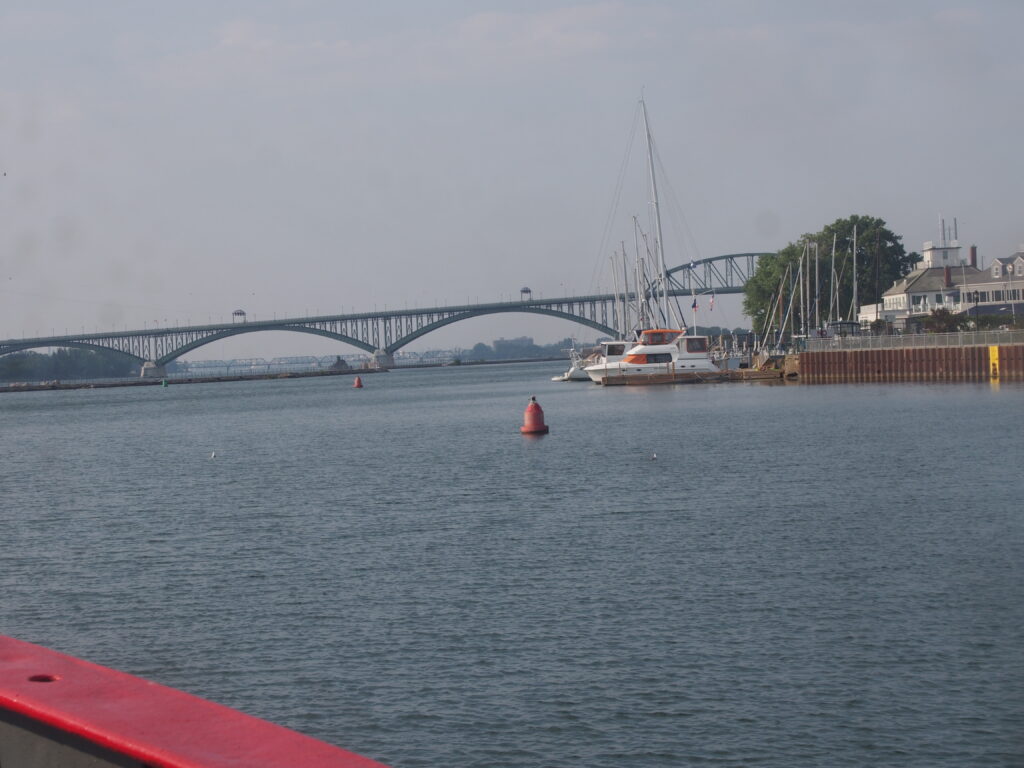
Here is some information about a dramatic fire in Canada, that the Cotter responded to, from an article that I wrote for the Great Lakes Scuttlebutt:
One of the more dramatic events in the fireboat’s history occurred on October 7, 1960, when the Cotter was called to respond to a grain elevator fire at Maple Leaf Milling in Port Colborne, Ontario, one of the largest million operations in North America.
According to Captain Michael Kick, “As the Port Colborne Fire Department fought this fire in the eight-story building, it proved to be very stubborn, and they were unable to quell the blaze. A call was put out to Buffalo asking for the fireboat. At around 10 p.m., with no navigation equipment yet on the boat, the U.S. Coast Guard Cutter Ojibwa escorted the Cotter on the two-hour trip to Port Colborne.
“With a maximum pumping capability of 15,000 gallons per minute, the Cotter flowed water for four hours, and it brought the fire under control. The average fire engine can pump 1,500 gallons per minute. This became historical, as this was the very first time anywhere that a fireboat crossed international waters to help fight a fire in a foreign country.”
Each August, Kick said, “Port Colborne hosts its annual Canal Days and invites the Cotter to attend. It is always greeted with a hero’s welcome, as the entire community knows of the day the Cotter saved Port Colborne. An average of 4,000 tour the boat over the three-day visit.”
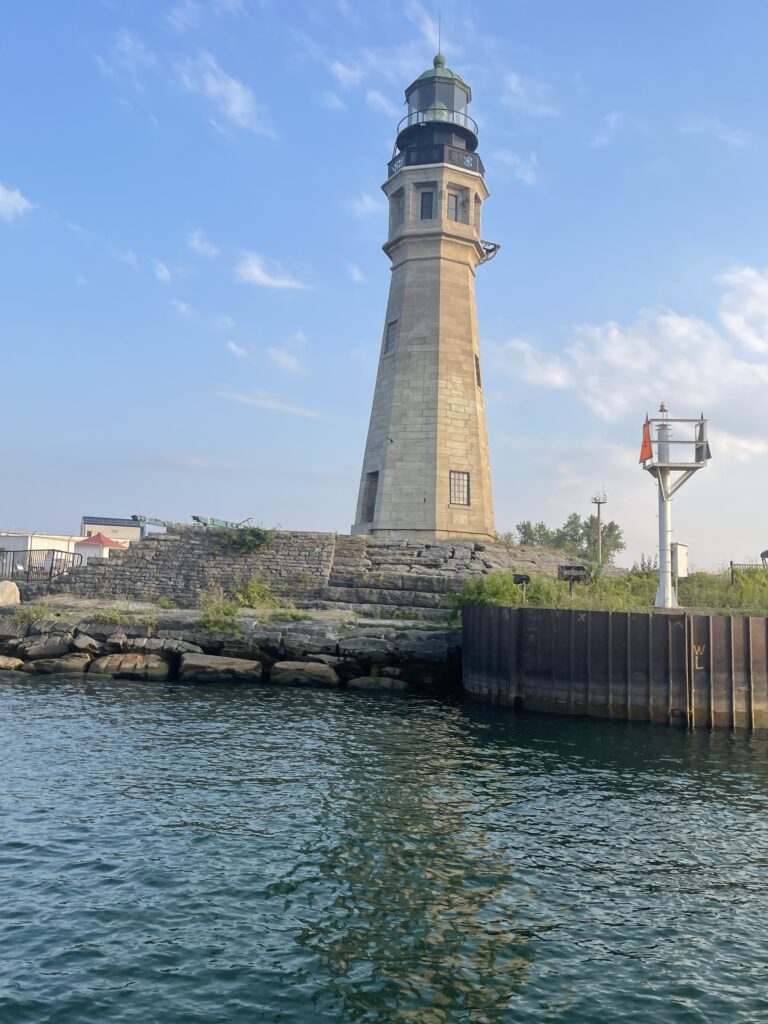
This is a view of the Buffalo Lighthouse from the Edward M. Cotter.
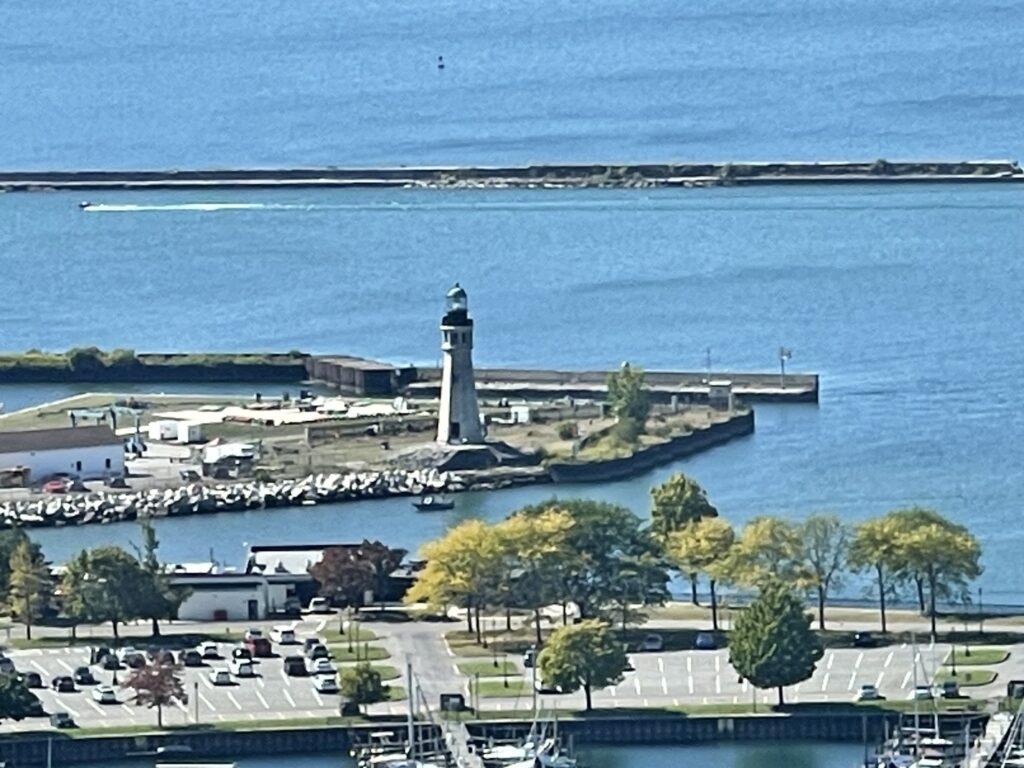
That’s what the Buffalo Lighthouse looks like from the observation deck of Buffalo’s City Hall.
The ride that I enjoyed on the Edward M. Cotter took two hours. Toward the end of it, we were treated to a water salute. It was fun to watch (from inside the boat, of course).
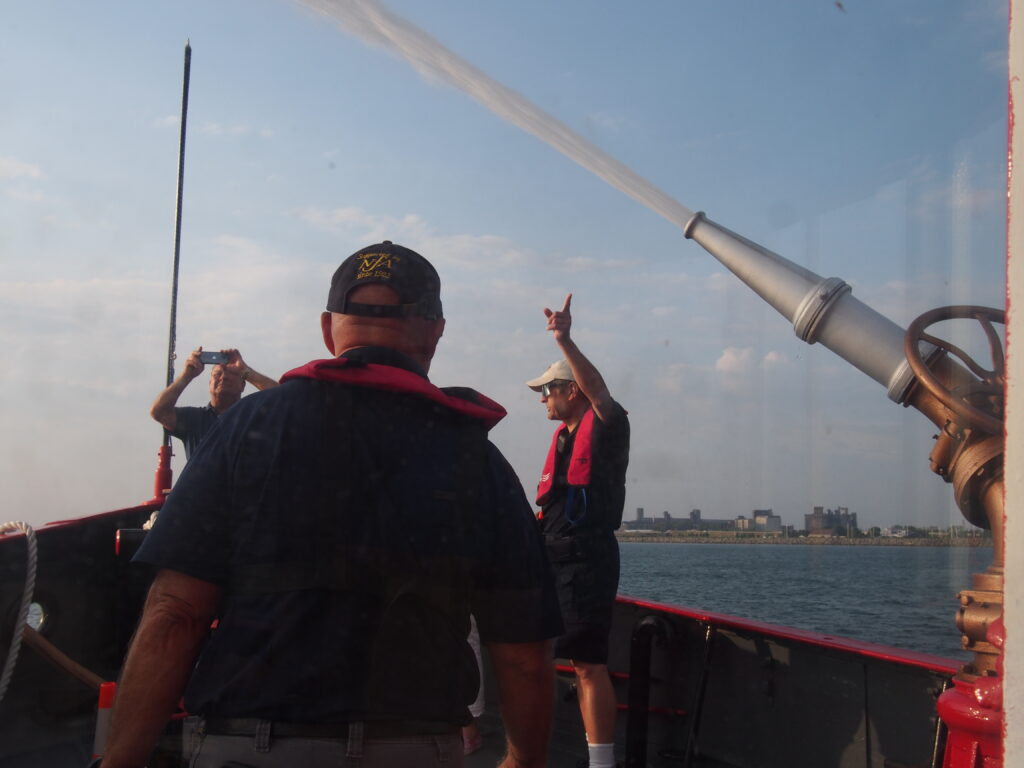
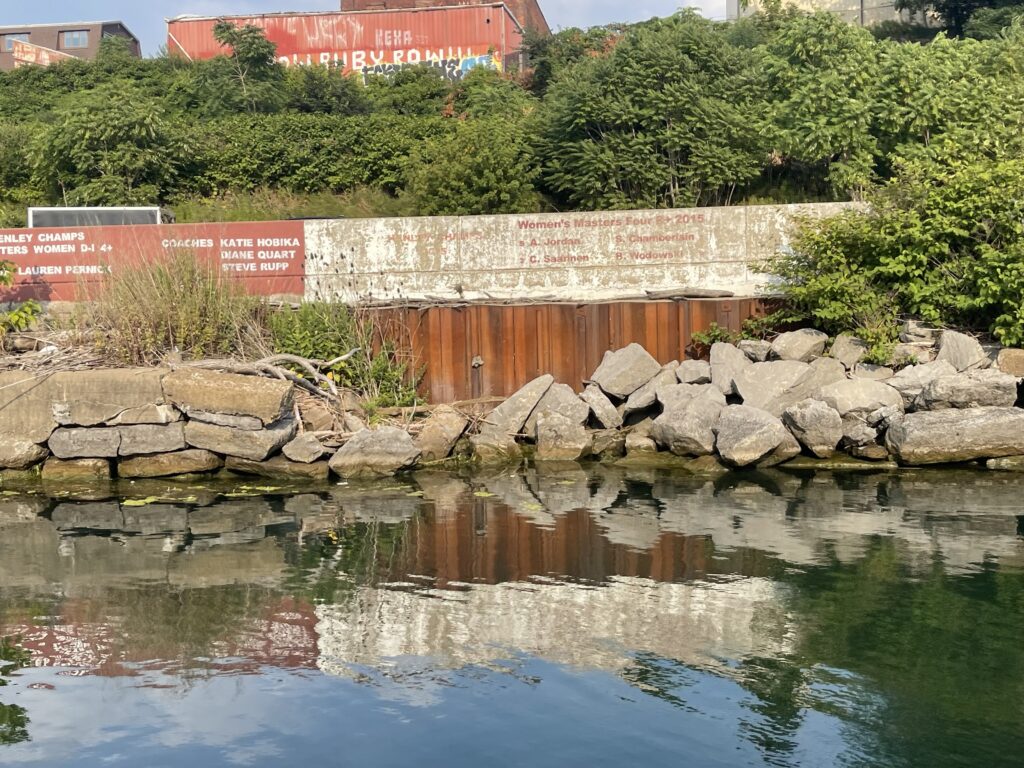
Names listed on the wall are rowers from the West Side Rowing Club, an organization that teaches rowing and has a variety of teams that compete in local races.
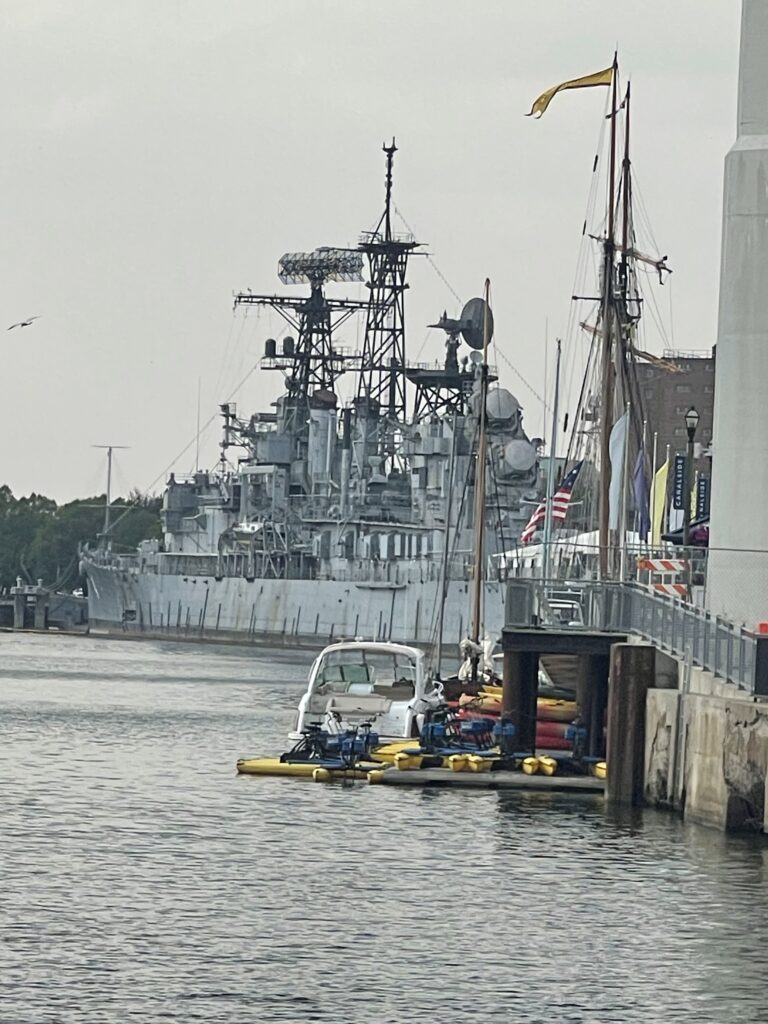
Buffalo’s waterfront.
I hope that you’ve enjoyed the story of the Edward M. Cotter. The ride was so much fun, and I am so grateful to the Buffalo Launch Club for giving me the opportunity to be part of this experience.
Such interesting history Alice and what a ride you had. Thanks for taking me along with you and learning more about the Edward M. Cotter.
You’re very welcome. I truly love to share my adventures, and I am happy that you came along!
Hi Alice,
I love the pictures and your description of the ships history and adventures.
As you say, “a landmark” and it isn’t even on land.
Blog on!
Thank you, Doug. That boat ride was so much fun. For sure, it was the first time I’d ever experienced a floating landmark!!!